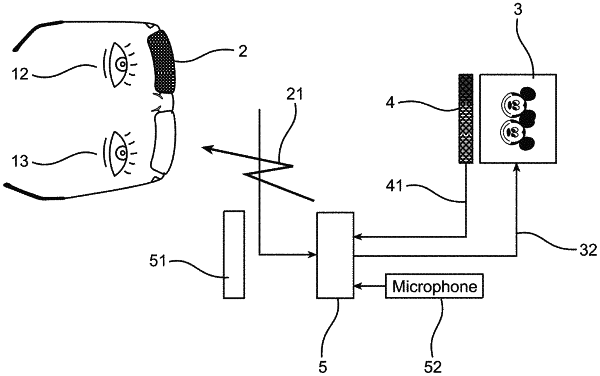| CPC A61B 3/113 (2013.01) [A61B 3/08 (2013.01); A61B 3/145 (2013.01); A61H 5/005 (2013.01); A61H 2201/0157 (2013.01); A61H 2201/0192 (2013.01); A61H 2201/1207 (2013.01); A61H 2201/165 (2013.01); A61H 2201/50 (2013.01); A61H 2205/024 (2013.01)] | 13 Claims |

|
1. A method for screening, treatment, monitoring and/or assessment of visual impairments, comprising:
simultaneously applying two separate processing steps to images presented to a patient's eyes using electronic means, the electronic means comprising image generating means, digital image processing means, eye tracker means for measuring a direction of the patient eyes' line of sight, and display means for presenting images to both of the patient's eyes, the two separate processing steps being:
a first processing step being applied to a non-amblyopic eye, and
a second processing step being applied to an amblyopic eye,
wherein the first processing step creates an area with a controlled measure of image degradation, where the location of the degraded area is moved responsive to the measured direction of the line of sight of the non-amblyopic eye,
wherein the second processing step is continuously responsive to a measured direction of a line of sight of the amblyopic eye and the response includes, when there is deviation between the measured directions of the lines of sight of both eyes, movement of the image vertically and/or horizontally as real-time image disparity compensation based on live eye tracking data, so that as the line of sight of amblyopic eye moves vertically and/or horizontally, the presented image on the display means is moved as well, thereby ensuring that a stimulation center remains on a fovea region regardless of which direction each eye is looking; and
wherein the method further comprises compensating for changes of strabismus angles with different gaze directions by the real-time image disparity compensation based on live eye tracking data.
|